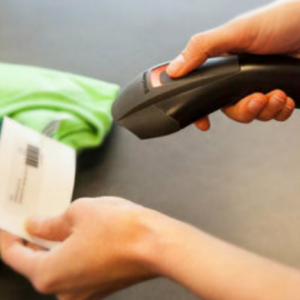 Operational productivity in the DC or warehouse depends on a number of factors, but when it comes to your cordless devices, like handheld scanners or mobile computers, success rests with the batteries they run on. To ensure long life and maximum up-time, here are 6 best practices for mobile device battery health.
Operational productivity in the DC or warehouse depends on a number of factors, but when it comes to your cordless devices, like handheld scanners or mobile computers, success rests with the batteries they run on. To ensure long life and maximum up-time, here are 6 best practices for mobile device battery health.
- Label Each Device
As soon as you receive it, number and label each device critical to your mobile strategy. Labeling each unit helps to keep tabs on them – for example, you’ll always know if a bar code scanning device is charging, or if a device is missing at the end of a shift. As you insert replacement batteries for your handheld devices, you can rest assured you have a freshly charged battery and spares, if needed.
- Label Charger Slots and Batteries
By assigning batteries and charging slots to specific devices, you can tell at a glance if one is missing. With a spare battery charging for each device, workers can easily swap their depleted batteries without risking extended downtime.
- Replace Batteries at the Right Time
Every battery has an expected lifespan, and while the battery may still operate beyond the expected timeframe, you will experience reduced efficiency. The battery will no longer charge as fully as it once did, so workers may have to change batteries in the middle of a shift, or they may have to scan items multiple times before the device can read the bar code. Most batteries in daily rotation should be replaced every 12 to 18 months, depending on the number of shifts in operation.
- Mark Batteries with the Purchase Date
Knowing how long your mobile computer batteries have been in rotation will help you plan the optimum replacement cycle, making it easier for you to ensure you have enough fresh batteries for every device. Some people write purchase dates on the device while others use colored stickers to denote the month and year of purchase. Keeping track of the colors assigned to each month is a little extra work up front, but it makes it easier to visually scan your battery supply to see how many are due for replacement. Whichever method you choose, tracking service cycles help ensure you won’t lose productivity because of weak batteries.
- Invest in Spares
You should always have at least one and preferably two spare batteries per device. This helps ensure you always have a fully-charged battery available and eliminates unnecessary downtime because of battery availability. Don’t forget to label the spares the same way you do the main batteries.
- Perform Regular Battery Maintenance
Dirt and debris are the enemy of well-charged batteries. Periodically clean the contact terminals with a soft lint-free cloth to keep the battery clean and charging freely.
Consider Battery-Free Devices
The latest scanning devices, such as the Honeywell Voyager 1200g-bf, use supercapacitors rather than batteries for power. These devices hold their charge for about 100 scans, but recharge in just a few seconds. They are ideal for retail scanning or any scanning application where the device is not in continuous use for extended periods. You can learn more about this technology here.

Recent Comments